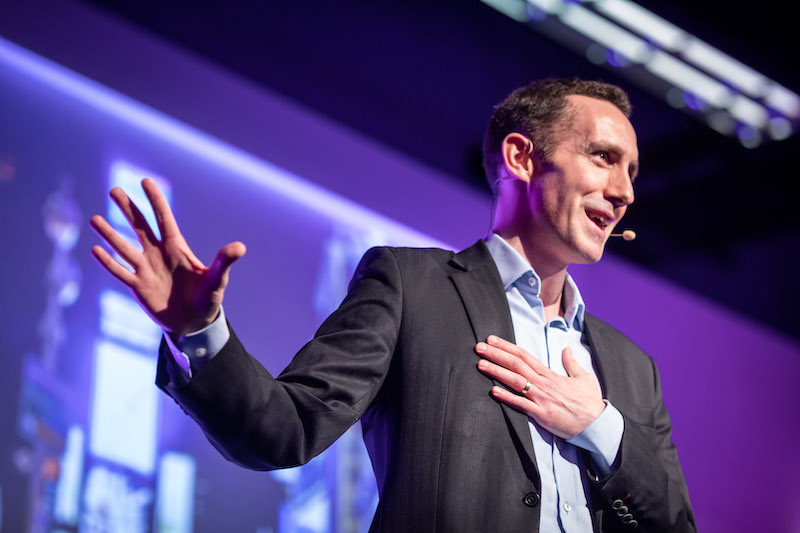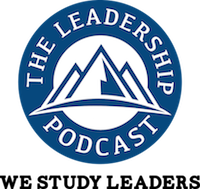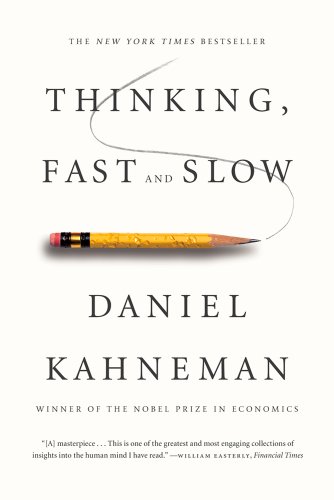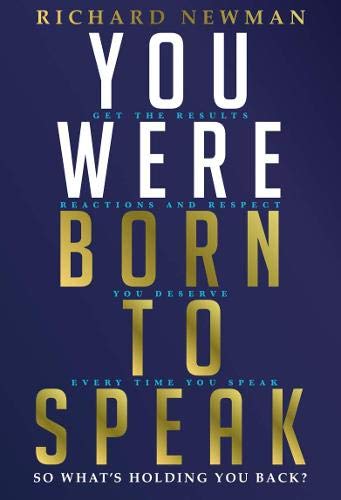
Richard Newman is the Founder and CEO of BodyTalk. In 21 years, Richard’s team has trained over 100,000 business leaders globally to improve their communication and impact. Richard learned recently that he is high-functioning on the autism spectrum; and he feels it blessed him by guiding his life in a deep exploration of communication. He shares how he teaches the hero’s journey to improve storytelling in meetings. Richard tells of the importance of nonverbal behaviors and of a research study he conducted with University College London on the effectiveness of postures and nonverbal behavior in projecting leadership qualities. Richard has great advice for leaders on lifting others to become the best versions of themselves.
Key Takeaways
[2:24] If Richard had been taller or a better player, he may have become a professional basketball player. He was sort of born in the wrong country. When he comes to the U.S., he loves going to watch basketball. There’s not much of a basketball industry in the UK.
[4:11] At age 17, Richard taught 11-year-olds at his school how to play basketball, to keep up with other schools. He thought of going into teaching. He went to a monastery in India on a gap program and taught the monks English, using only a chalkboard, body language, and tone of voice. At the end of the first lesson they could confidently speak a few English words and they loved it. He taught for six months.
[7:30] Richard learned from teaching English that to communicate well, he had to have congruency between his body language, his tone of voice, and his words. To teach the word “excited” he had to sound and look excited. Congruency is one of the key elements of great communication. That principle became foundational to BodyTalk, the company he founded.
[8:56] Richard learned Nepali in India, the easiest dialect of the three languages spoken in the city where the monastery was located. He became more fluent in Nepali than in the French or German he had learned in school.
[10:44] The biggest communication error is to treat people as human “doings” rather than human beings. Presentations seek to engage the logical mind. Studies show that the emotional brain engages first, and then sends a memo to the logical brain telling it what to notice. Before a meeting (or email), ask yourself, “How do I need people to feel by the end of this meeting (or email)?”
[13:32] Everybody talks about storytelling; they know they need it, but few people understand what it is. Robert McKee says when you listen to a piece of music, you don’t automatically think you would be a great composer. When thinking of storytelling, why do you assume you would be a great storyteller? There is a framework you can learn to be able to tell stories well.
[14:11] Storytelling allows us to give people information in the way the brain wants to receive it, engaging the survival mind, the emotional mind, and then, finally, the logical mind. Joseph Campbell’s The Hero With A Thousand Faces introduced this structure in 1949 after having studied how people of different civilizations that never had contact with each other have told stories through the centuries.
[15:01] Christopher Vogler in the 1980s reduced Campbell’s 17-steps of the hero’s journey into 12 steps. Richard Newman has simplified those steps into five sections that his company teaches people to use for composing an email or making a presentation.
[15:30] If you want to cascade information, frame an important message, or pitch your business, learn the power of storytelling. Richard tells of a client who went from a win rate of one in four to a 100% win rate in the space of a year, getting over a billion dollars of new business. Frame the information to engage the survival and emotional brain, the logical brain, and then get people to take action at the end.
[16:50] Jim Carey said that constantly talking isn’t necessarily communicating. The way to turn any information into a more engaging story is to add in moments of feelings. Describe the feelings the facts give you. Start with your goal in mind. What feeling would people need to have for them to take the action you would persuade them to take?
[21:50] Richard offers a tip on how to lose your self-consciousness and gain confidence. Before a meeting, get centered within yourself; have internal validation. Then, going into the room, focus entirely on what is happening outside of you, so you are always thinking, “How do I serve them? How do I make sure they understand? How do I get them to this feeling by the end of the conversation?”
[27:41] People going through the Great Resignation are questioning their values and what they want their life to be about. Businesses sometimes have to make a hard decision because the easy one doesn’t match their values. Choosing the easy path may give a short-term gain but it leads to long-term pain. People will follow you if they see you don’t compromise your values for short-term benefits.
[30:00] Richard learned recently that he is high-functioning autistic. He had a sense of sudden understanding. He’d known since he was a child he could not connect with his peers but didn’t know why. He developed a passion for studying communication. As a teen, he read over 200 books on it, including nonverbal communication. He went to a professional acting school. He sees it as a blessing.
[33:20] Jan refers to previous guest Tim Cole as a great storyteller.
[34:12] Richard teaches behaviors that can increase leadership success by 44%. He developed these behaviors while giving over 1,000 presentations to a Formula 1 team. It was the same presentation with different statistics after each race, to different audiences. He started noticing what worked universally and teaching it to clients. They went to University College London to get it scientifically validated.
[35:57] They worked with researcher Dr. Adrian Furnham, Head of Psychology. They developed an 18-month study using 100 videos of the same speech, with different speakers, using variations in the nonverbal behavior of the speaker, from the most common gestures to the ones that should give the appearance of leadership.
[37:09 Dr. Alastair McLelland, the statistician, had never seen results like it! From the most common behaviors to the most effective behaviors, there was a 44% difference in the appearance of leadership. The best behaviors would change the number of people voting for you by 59%! Standing centered looks competent while leaning to one side, swaying, or walking back and forth gives poor ratings.
[39:30] If you’re speaking to a group, people want to know that you, as their tribe leader, can honestly lead the group. If they see gravitas, they will believe you; if they see a pushover, they will not. If they believe in you, they will engage with your message and follow you. Amy Cuddy’s TED Talk on body language says if you stand or sit in a way that shows confidence, your confidence hormones rise.
[42:53] Watching the early Democrat presidential debates in 2020, Richard spotted that Kamala Harris got the most emotional reactions from the audience. She didn’t win the nomination, but Biden picked her to run with him for her emotional appeal. Richard doesn’t recommend going for a negative response!
[45:36] Being positive doesn’t mean covering up bad facts. It is always better to dig into the truth of the situation. If things are going poorly, then it’s important to state that. If people have challenges, you want to acknowledge and discuss those and show that you care about them. People often forget to recognize challenges while they tell a story. People’s challenges could disconnect them from the story.
[46:08] Start from the sense that everybody cares about challenges and everybody cares about having a better future. We all have this pain/pleasure mechanism. Make sure you represent those. Go in with a sense of empathy rather than making those negative feelings worse.
[47:04] Is showing a bad temper justifiable? Richard answers with a customer service experience he had. He recommends using the power of “lift,” where you aim to lift the conversation. Before you go into the room. lift yourself to show up as your best version. Then go into the meeting and see the best version of them. They will want to live up to this. Leaders can encourage their team by seeing the best in them.
[50:46] Jim’s last words: There is nothing more powerful as a leader you can do for your team than to see their greatness. Don’t show up as the hero. Lead them to be heroes; show up as their mentor.
[52:03] Jan invites all listeners to give a listen to Corporate Competitor Podcast, hosted by Don Yaeger.
[52:53] Jim closes with a quote: “Outstanding leaders go out of their way to boost the self-esteem of their personnel. If people believe in themselves, it’s amazing what they can accomplish.” — Sam Walton.
The Leadership Podcast is sponsored by W.S. Darley & Company.
Founded in 1908, Darley remains a family owned and operated business, providing the highest quality equipment solutions to our country’s warfighters and firefighters.
Learn more at darley.com and darleydefense.com
Quotable Quotes
“By the time I got to be 17, I thought, … ‘I’m going to teach the 11-year-olds at our school how to play basketball so they don’t get beaten to pieces in their first game as we did.’ So I started doing that. I loved that. I loved… Share on X “[The monks and I] would sit together in the evenings after they came back from going out and doing prayers in the town, … and I would then aim to teach them how to speak English, and had to do it completely using body language and… Share on X “[Congruency] is one of the key elements of great communication. When you have congruency, it becomes very charismatic but also much easier for people to pay attention, to listen to you, and to understand what you really mean.” Share on X “You need to make sure you’ve got hearts and minds. You need to make sure you’ve engaged people emotionally first, then logically, and then they’re more likely to follow you as a leader.” Share on X “What storytelling allows us to do is to give people information in the way the brain wants to receive it, engaging the survival [mind], then the emotional mind, and then, finally, the logical mind.” Share on X “If people know how to use storytelling day-to-day, it’s incredible how it increases your influence, and you can use it in a 30-second conversation, … or you can see this in a three-hour movie, or you can use it for a two-day… Share on X “If you’re speaking to a group, we want to know, as our tribe leader, can you honestly lead this group? If you’ve got gravitas, we believe it, if you’re a pushover, we don’t.” Share on X “It is always worthwhile digging into the truth of the situation. If things are going poorly, then it’s important to state that. If people have challenges, you want to acknowledge those, and discuss those, and show that you care… Share on X “When people can’t see the best version of themselves, see it in them for them, and by doing so, you give them an open door to become a lifted part of themselves.” Share on X “You’re seeing the greatness within them and allowing them to go on the journey, and that’s what great leaders can do, they can lift everybody else to perform at their best.” Share on X
These are the books referenced during our conversation with Richard
Resources Mentioned
- Sponsored by: Darley.com
- Richard Newman
- BodyTalk
- Formula 1
- Tour de France
- India
- Gap Year Association
- Helen Keller
- Nepali
- Kalimpong, India
- Darjeeling, India
- Powerpoint
- Zoom
- Robert McKee
- Christopher Vogler
- The Trier Social Stress Test
- The Great Resignation
- Nonverbal leakage
- Tim Cole
- University College London
- Adrian Furnham
- Alastair McLelland
- Amy Cuddy, TED
- Corporate Competitor Podcast with Don Yaeger









Recent Comments